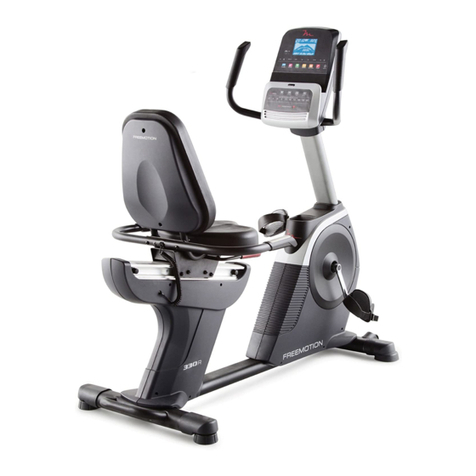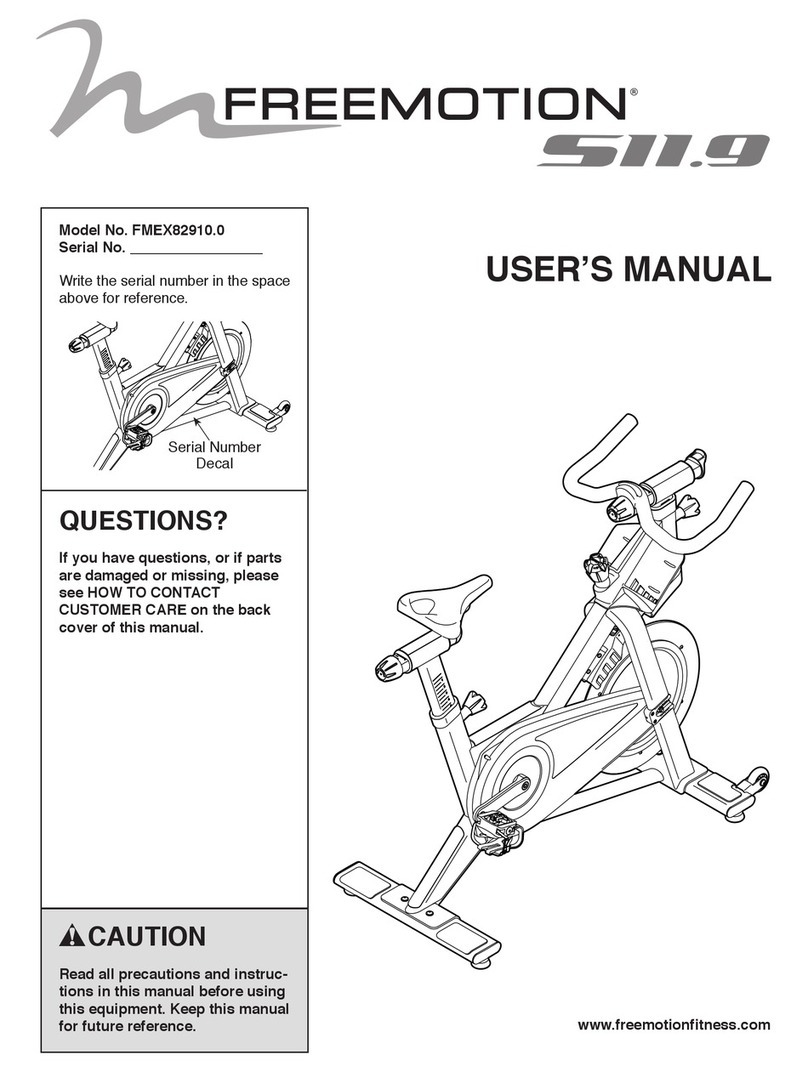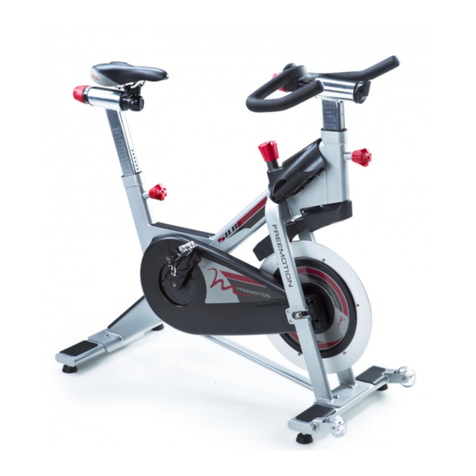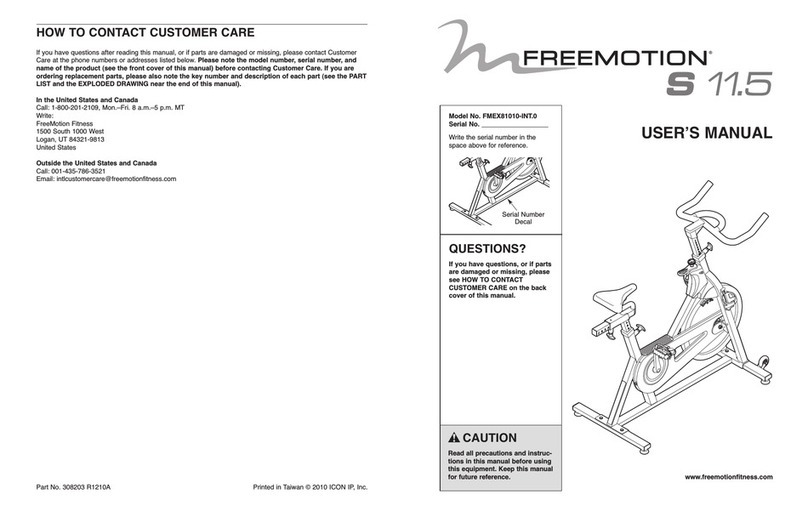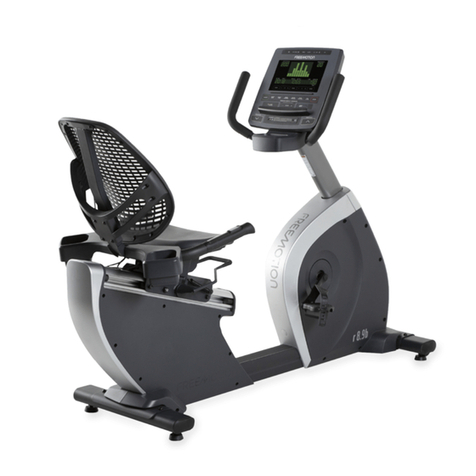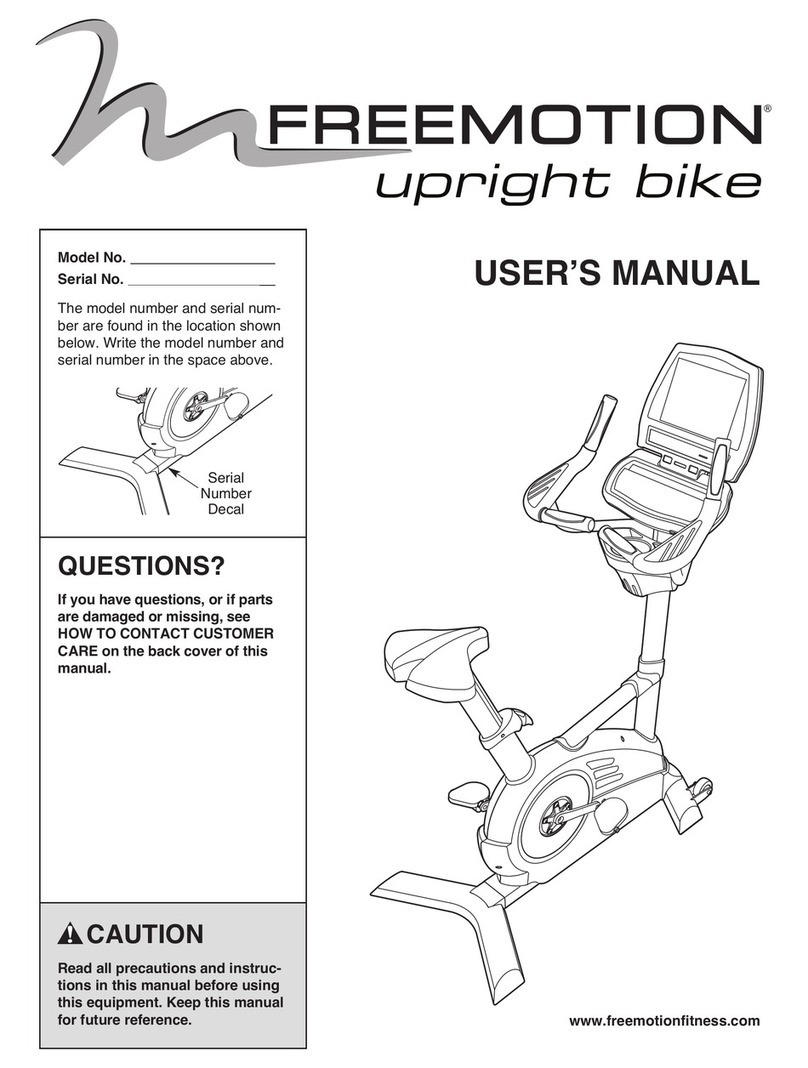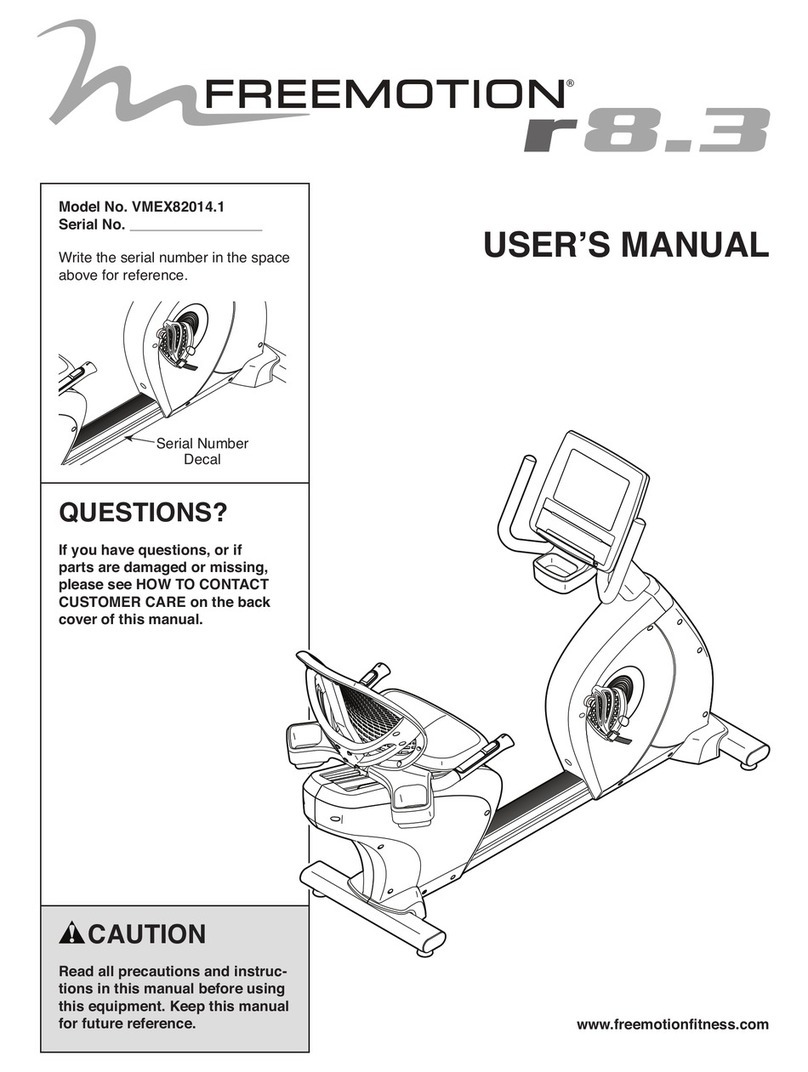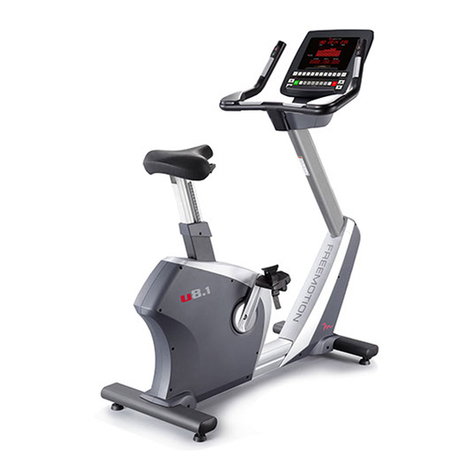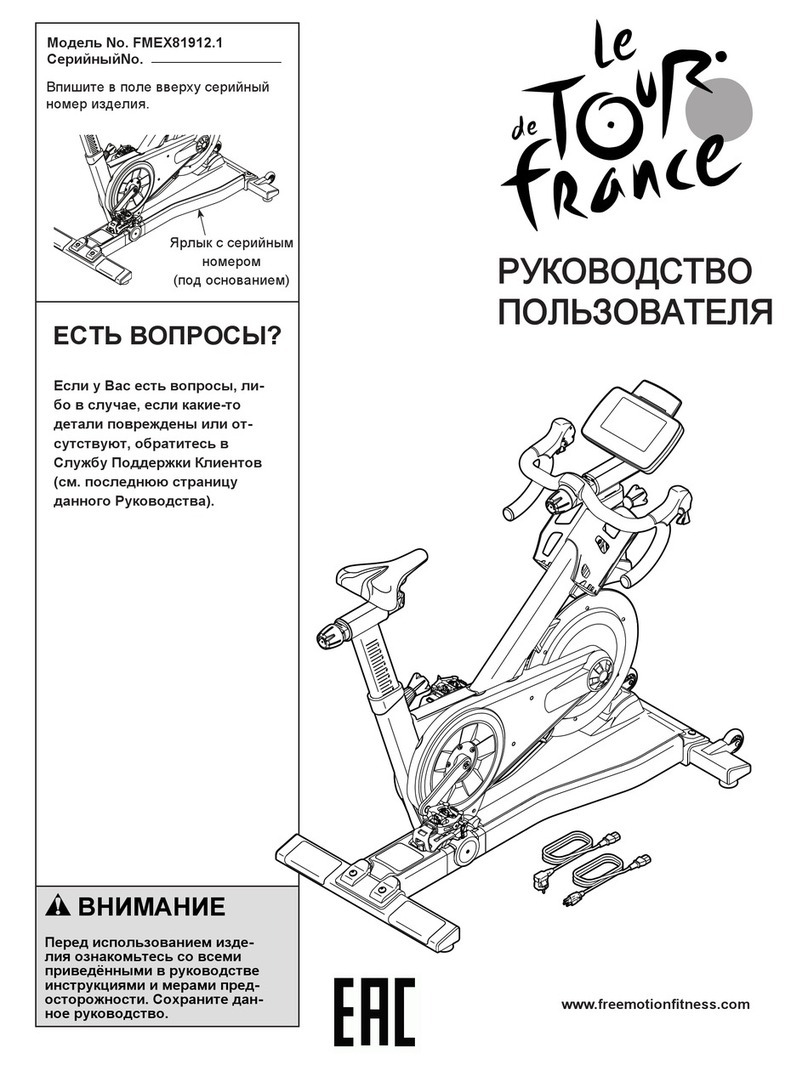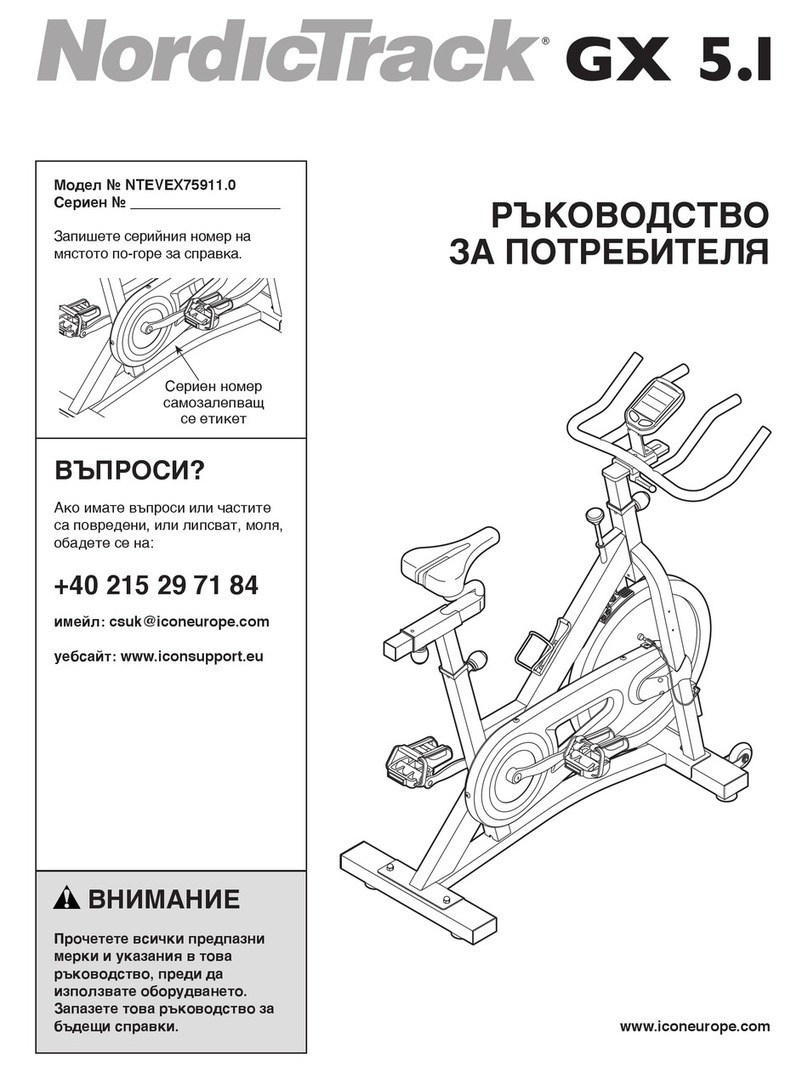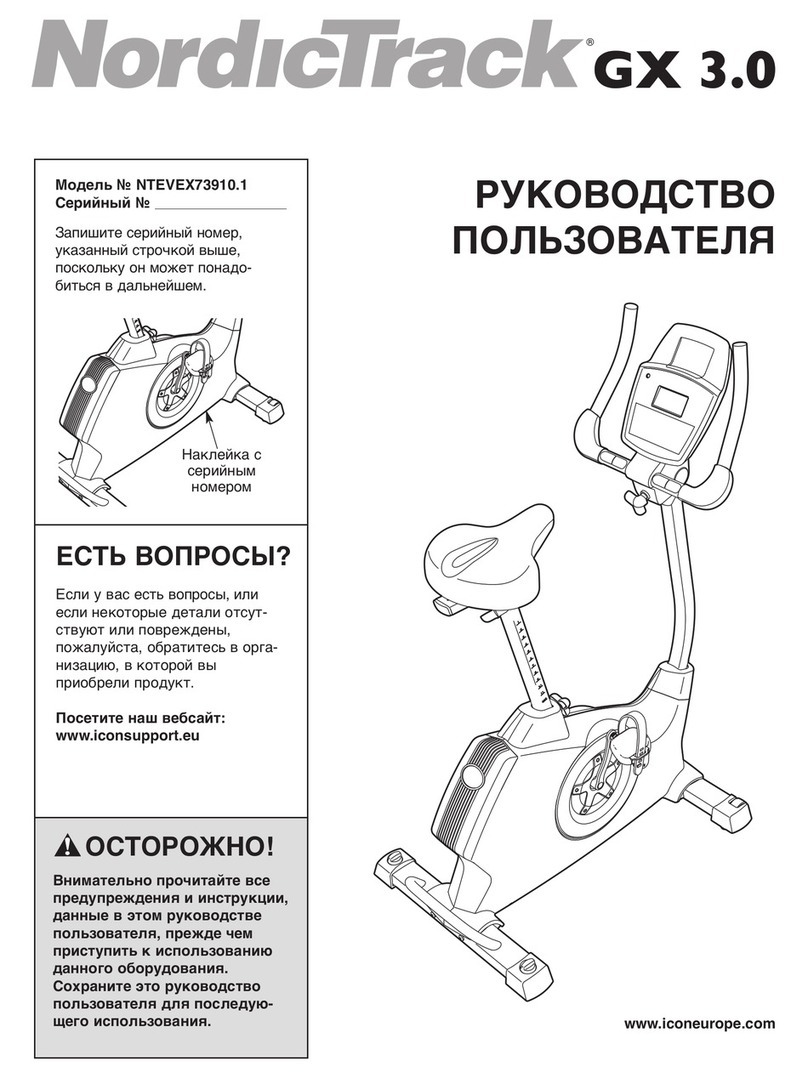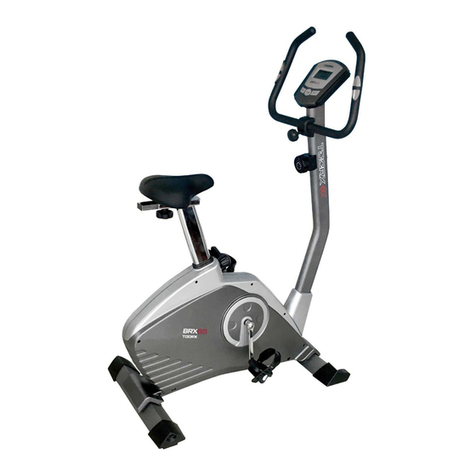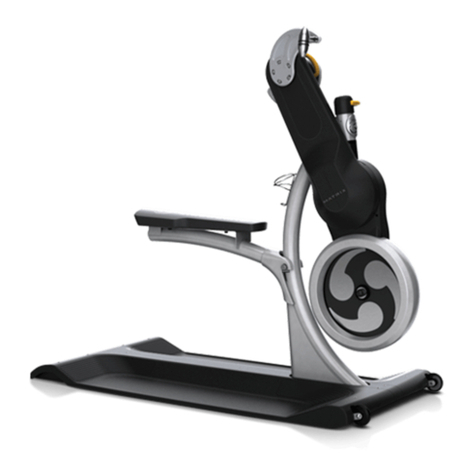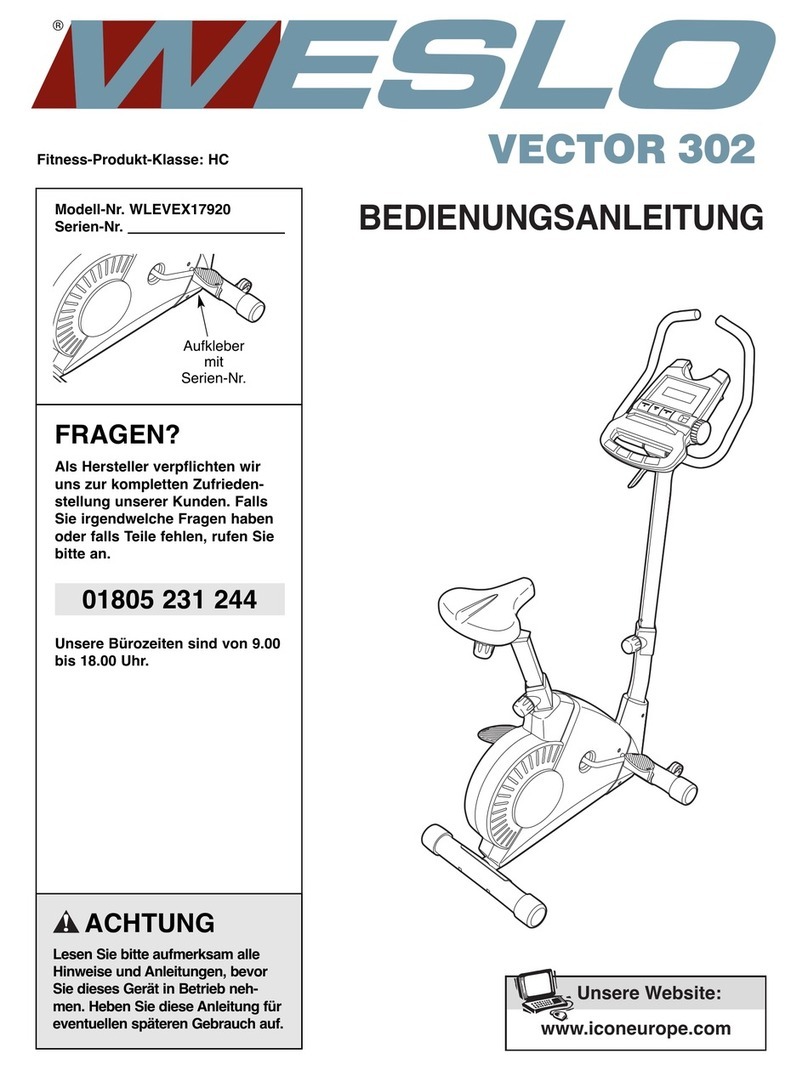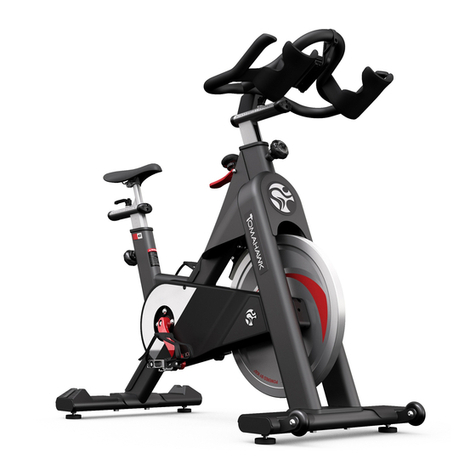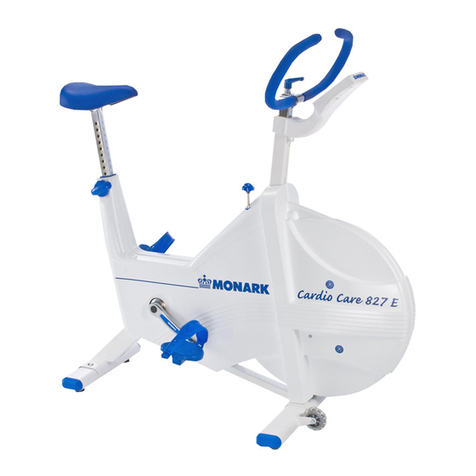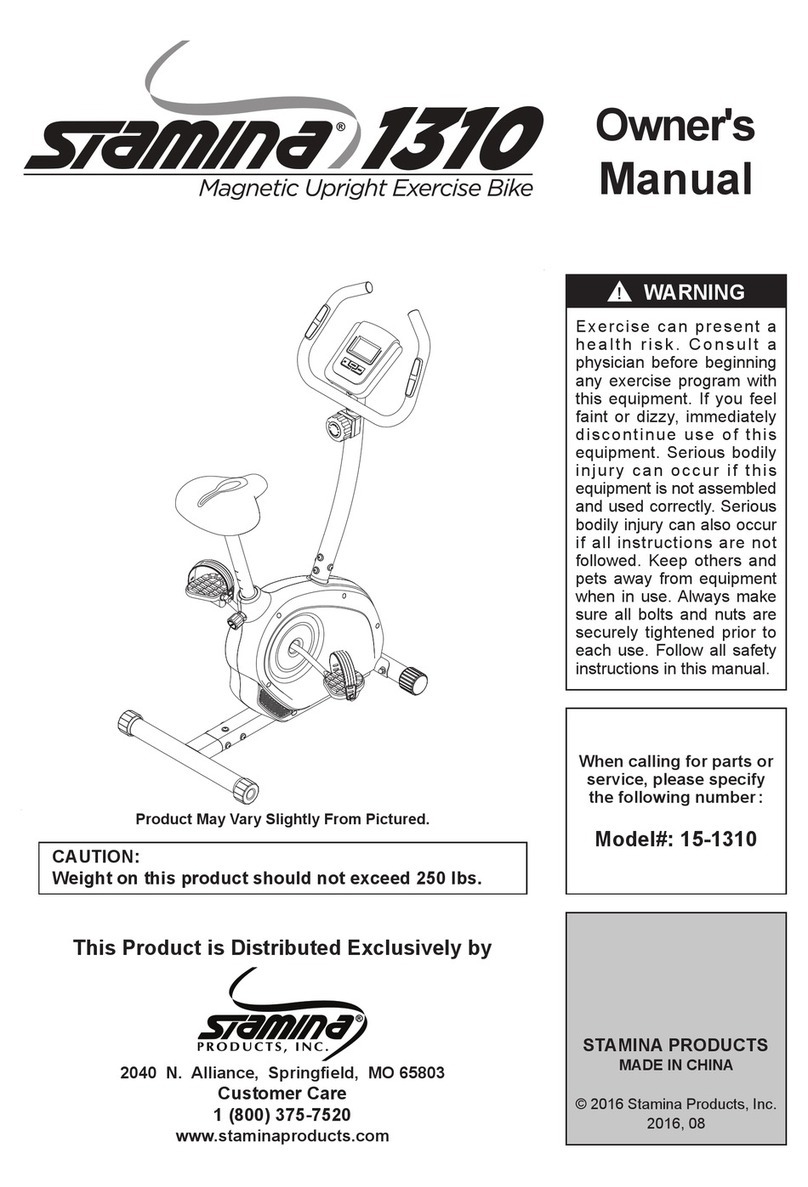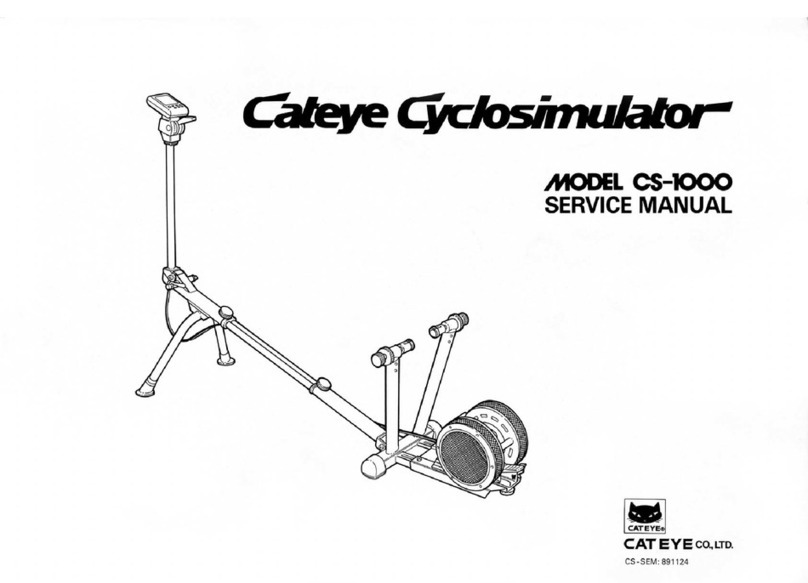
3
I PORTANT PRECAUTIONS
WARNING: To reduce the risk of serious injury, read all important precautions and
instructions in this manual and all warnings on your exercise bike before using your exercise bike.
Free otion Fitness assumes no responsibility for personal injury or property damage sustained by
or through the use of this product.
1. Before beginning any exercise program, con-
sult your physician. This is especially
important for persons over age 35 or per-
sons with pre-existing health problems.
2. Use your exercise bike only as described in
this manual.
3. It is the responsibility of the owner to ensure
that all users of the exercise bike are ade-
quately informed of all precautions.
4. Keep the exercise bike indoors, away from
moisture and dust. Do not place the exercise
bike in a garage or covered patio or near
water.
5. Place the exercise bike on a level surface. To
protect the floor or carpet from damage,
place a mat beneath the exercise bike. ake
sure that there is at least 2 ft. (0.6 m) of clear-
ance around your exercise bike.
6. Inspect and properly tighten all parts regu-
larly. Replace any worn parts immediately.
7. Keep children under age 12 and pets away
from your exercise bike at all times.
8. Your exercise bike should not be used by
persons weighing more than 350 lbs.
(159 kg).
9. Wear appropriate exercise clothes when
exercising; do not wear loose clothes that
could become caught on your exercise bike.
Always wear athletic shoes for foot protec-
tion.
10. Hold the handgrip pulse sensor or the han-
dlebars when mounting, dismounting, or
using your exercise bike.
11. Keep your back straight while using your
exercise bike; do not arch your back.
12. The pulse sensor is not a medical device.
Various factors, including the userʼs move-
ment, may affect the accuracy of heart rate
readings. The pulse sensor is intended only
as an exercise aid in determining heart rate
trends in general.
13. When you stop exercising, allow the pedals
to slowly come to a stop.
14. Over exercising may result in serious injury
or death. If you feel faint or if you experience
pain while exercising, stop immediately and
cool down.
15. Do not modify the power adapter or use an
adapter to connect the power adapter to an
improper receptacle. Keep the power adapter
away from heated surfaces. Do not use an
extension cord.


